Gardeners in temperate climes may wonder why I love Jeffersonia diphylla. For them it grows easily, spreads nicely and offers a touch of light in a shaded border. A nice plant, but nothing special.
Jeffersonia doesn’t grow easily for me. I have to coddle it, and it is one of the few plants at Glen Villa that gets this care. As for spreading nicely, no such luck. My one plant grew for quite a few years before it produced a baby.
Nonetheless, I love Jeffersonia. It is my favourite plant. Not because it is carefree, but because it speaks of childhood and of Virginia, where I grew up. Jeffersonia is a true Virginia plant, named by the American botanist Benjamin Smith Barton after the many-talented Thomas Jefferson. It is a spring ephemeral as fleeting as childhood itself, blooming so briefly that some years I miss the white flowers altogether.
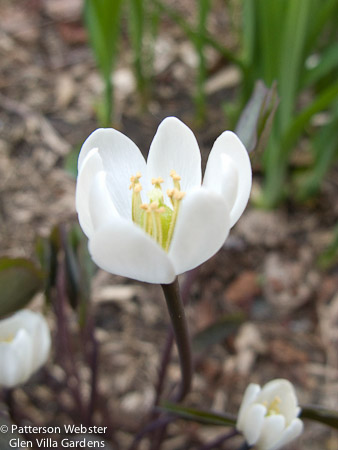 |
| Jeffersonia diphylla, a spring ephemeral |
It is also a plant whose character and appearance shift delightfully throughout the growing season.
Shortly after the ground thaws, which in Quebec can be as late as mid-April, tiny tips of reddish-purple begin to peek up from the bed outside the kitchen door. These small tips are hard to see at first — they are almost the colour of the mulch that surrounds them. But soon pale vampire-like spears appear, desperately searching for sunlight instead of avoiding it, as any sensible vampire would do.
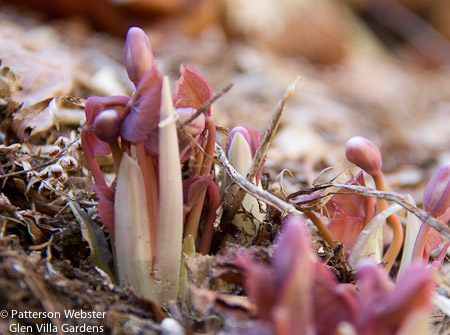 |
| I took this photo on April 12, 2010. |
Leaves begin to develop. At first they are the colour of bloody wine — a Merlot perhaps? — barely touched with green. Prominent veins make them look soft and vulnerable.
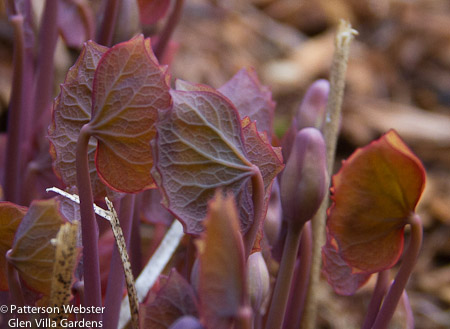 |
| I took this photo on April 24, 2012. Don’t you want to stroke those leaves? I do. |
Gradually, the short-lived flowers form. They open like cups held atop rigid stems. They are stately, elegant.
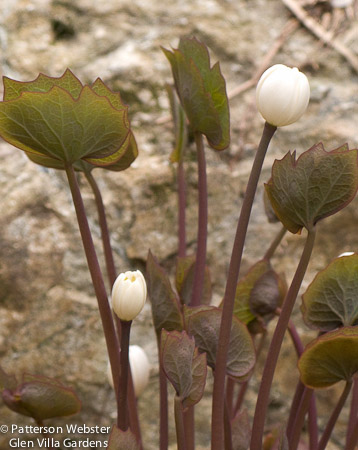 |
| White flowers begin to appear among leaves tinged with merlot. |
Jeffersonia is a typical spring ephemeral, white with a yellow centre. In a good year, when the weather is cool, the flowers may last a week. More typically, they last three or four days.
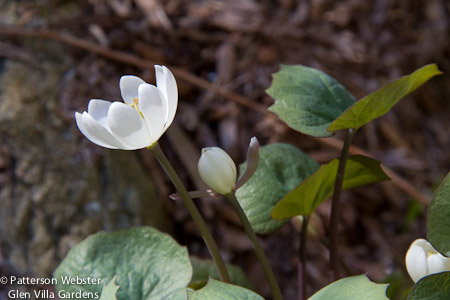 |
| The flower resembles bloodroot, but the two plants are not related. |
If it rains, the petals drop quickly. Ditto if the wind blows. And heaven forbid it get warm too quickly — the flower simply disappears, as if it never was there. (I think you get the point: this ephemeral is really ephemeral.)
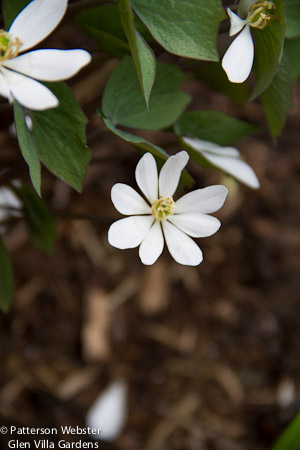 |
| I was fortunate a few years ago to see the petals falling. Beauty is ephemeral. |
The real show begins as the leaves grow bigger and broader. They change colour to a soft blue-green, and as they do, the second part of the plant’s name becomes self-explanatory. Di-phylla: two leaves. The two lobes almost appear to be separate leaves — which explains the plant’s common name, twinleaf.
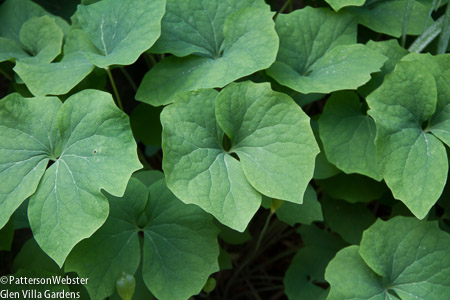 |
| Veins in the leaves remain prominent, adding texture throughout the growing season. |
The leaves are the lasting beauty of the plant. They make me think of butterfly wings; I keep waiting for the plant to take flight.
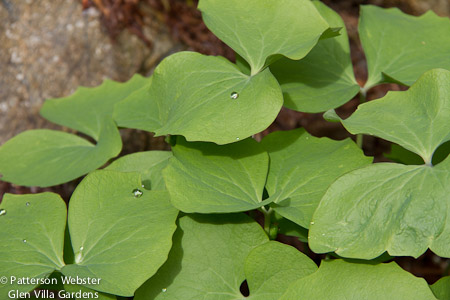 |
| Drops of water on butterfly wings |
Jeffersonia is a chameleon, constantly changing — but never blending in. The tender, vulnerability of early spring becomes comedic in mid-summer when the seedpod starts to form. With its twin lobes, the seedpod reminds me of the bulging eyes of ET, the young alien in the movie from the 1980s.
 |
| The seedpod and leaves hold raindrops after a drenching storm. |
Then the plant begins to smile. Rather smugly, I have to say. The seedpod is hinged, and when it pops, Jeffersonia performs its best trick.
 |
| Jeffersonia begins its final act, as a comedian. |
The hinged pod opens to a full smile, displaying a mouthful of cinnamon-coloured seeds.
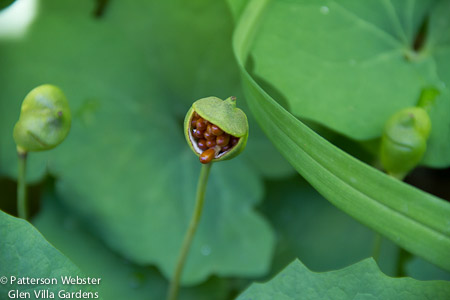 |
| Didn’t Jefferson’s mother tell him not to spit in public? |
Approaching the finale, Jeffersonia spits out its seeds, turns yellow, and laughs its last, best laugh.
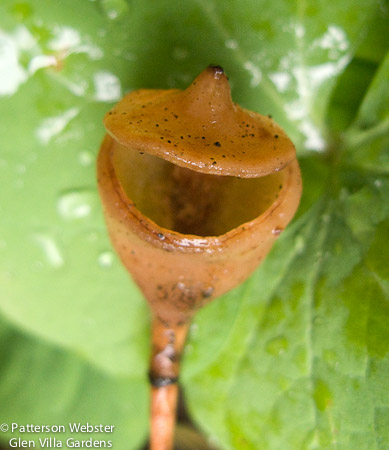 |
| Pac Man, anyone? |
All good things end. Eventually, Jeffersonia goes spotty and starts to shrivel, like a wizened comedian who walks with a cane.
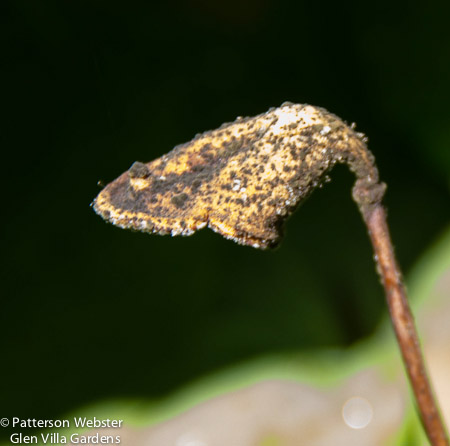 |
| Am I the only one who sees an upside down pipe? |
On a practical note: Jeffersonia grows best in rich woodland conditions: moist, well-drained, slightly acidic soil. It likes part shade and tolerates full shade. According to the Missouri Botanical Garden, it is native from New York to Wisconsin, south to Alabama and Virginia. It grows to about 8 inches when in flower and continues to grow through the summer, eventually reaching about 18 inches.
All this tells me that Jeffersonia shouldn’t thrive outside my kitchen door. But it does. And I thank it for providing such a good show, year after year.






I’d like to try Jeffersonia in my garden. I wonder if it will do any better for me in Massachusetts.
It may — although humidity could be a problem. If you have some shade, give it a try! And let me know how it fares.